A Simple Idea. A Big Impact
In lending, every second counts. Credit Decisioning Software ensures that who gets approved, what offer goes out, and when action is triggered happens with clarity and speed. These aren’t just decisions—they’re the engine behind growth, risk, and trust, built on a comprehensive digital lending platform.
But when the rules driving those decisions are slow to change, hard to see, or stuck with IT teams, progress stalls—even with sophisticated Underwriting Software or Automated Underwriting Software in place.
The truth? The biggest levers in lending performance are often invisible.
They’re the rules—deciding eligibility, pricing, limits, and next steps—that quietly shape everything from approval speed to compliance outcomes. Decision Intelligence Platforms and Loan Decisioning Software can help, but not all rule engines are built to handle that responsibility.
The Problem with Most Rule Engines?
Some run rules. Others drive outcomes.
Legacy BREs often feel like static checklists. You can automate decisions, sure—but changing them means calling tech, filing tickets, and waiting.
What you really need is:
- Rule logic that adapts with outcomes – Credit Decisioning Software can provide this flexibility
- Reusable modules across journeys – Decision Intelligence Platform integration helps here
- Flexibility to work with real-world data—APIs, JSON, behavioural signals Underwriting Software and Automated Underwriting Software capabilities are key.
Why Static Logic Crumbles in a Dynamic World
In modern lending ecosystems, Credit Decisioning Software exposes the weakness of static rule engines.
“Can we go live this Friday?”
“Only if tech gets to it. They’re still rewriting the rule.”
That one exchange, repeated in boardrooms across lending institutions, reveals a truth nobody likes to admit: the business isn’t in control of its own decisions.
Lending is No Longer Linear. Your Logic Can’t Be Either.
The way lending worked a decade ago was simple.
Products had fixed terms. Borrower segments were broad. Regulatory frameworks evolved once a year, maybe twice.
But today?
- Products morph constantly—BNPL today, embedded lending tomorrow —requiring agility in loan origination software.
- Risk teams need to iterate scoring models every quarter.
- Co-lending agreements require partner-specific rule variations.
- Regulatory expectations are increasing in frequency and complexity.
This means your decisioning logic— needs to be dynamic by design through enterprise workflow automation adapting to regulatory changes. Credit Decisioning Software helps institutions achieve this adaptability by centralizing and automating complex rules without heavy IT intervention.
And yet, in most institutions, logic is still buried in codebases. Written once, by developers. Changed slowly, by request. Understood by few.
To bridge this gap, modern lenders are turning to Decision Intelligence Platforms and Automated Underwriting Software that enable faster iteration, compliance alignment, and transparent audit trails.
Omnichannel is the difference between yelling and being heard.
The Cost of Inflexibility Is Steeper Than You Think
When rules are hardcoded, four things happen every time a change is needed:
- Time-to-Market Slips: Every rule tweak enters the IT queue, delaying product launches, updates, or compliance fixes.
- Ownership Blurs: Business teams can’t own what they can’t change. Product, Risk, and Ops are left chasing tech.
- Testing Becomes Fragile: Rule logic changes break downstream systems, especially when they’re undocumented or silently altered.
- Scale Becomes Manual: To add more journeys, more asset types, or new partners, you’re rebuilding instead of reusing.
A fast-scaling lender in Southeast Asia faced this exact problem. Their festive season offer—a dynamic cashback scheme for credit card users—was killed in the pipeline.
Why?
The eligibility logic sat with the IT team, who needed to re-factor core Java code. What should have taken two days became three weeks. By the time the campaign logic was ready, the season had passed. Competitors were already live.
Campaign aborted.
Revenue loss estimated at 14%.
Internal trust eroded.
With Loan Decisioning Software, these issues can be mitigated. Business teams can modify rules instantly, test without risk, and launch campaigns with confidence—without touching backend code.
The Bigger Strategic Risk? Fragility at the Core
Beyond launch delays or missed targets, static logic introduces system fragility:
- It becomes difficult to track what logic is currently in play, especially across versions.
- When something goes wrong, teams ask: “Where is this rule configured?”—and no one has a straight answer.
- When developers leave, their undocumented logic often goes with them.
This means that even for mature lending organisations, static decisioning becomes a black hole—where speed, accountability, and confidence disappear.
Modern loan origination platforms ensure visibility, documentation, and version control—turning opacity into transparency.
Lending Is Dynamic. Your Rule Engine Should Be Too.
To operate in today’s lending economy, decisioning logic must be:
- Editable by the business without tech dependency.
- Responsive to change, whether internal (credit policy) or external (regulation).
- Configurable and explainable, not buried in backend code.
When rules become business capability through collections strategy orchestration, institutions move from bottlenecked to agile.
From slow to smart.
That’s the promise of Credit Decisioning Software—to transform decisioning from a technical barrier into a strategic enabler. When paired with Automated Underwriting Software, it closes the gap between policy and execution, ensuring compliance, adaptability, and control at scale.
The Power of Visual Thinking in Rule Design
“I’m not sure where this rule lives.”
“Wait—didn’t we already fix that logic?”
“Why is it still rejecting customers?”
These are the kinds of questions that surface when business rules are buried deep in systems—untouchable, unreadable, and ultimately untraceable by the people responsible for their outcomes.
In most banks and lenders, the people who own the policy—product, risk, or ops—don’t actually own the logic. And that creates a silent gap.

A gap between what was intended and what’s actually happening.
This is where modern Credit Decisioning Software bridges the divide—making the connection between policy intent and execution transparent, traceable, and business-controlled.
Why Visual Logic Isn’t Just a UX Upgrade—It’s Operational Clarity
When rules are scattered across systems, visibility becomes a bottleneck—until you add
modular business rule architecture with visual clarity.
More than that, it becomes a risk.
Here’s what typically happens in traditional setups:
- Product defines a new eligibility rule (e.g., max EMI-to-income ratio = 50%).
- Risk approves it.
- Tech implements it—sometimes right, sometimes not.
- Operations flags an issue when applications start failing without explanation.
Now the troubleshooting begins. Except no one knows where to look.
- Did tech interpret the rule right?
- Was there a conflict with another condition?
- Is it a data issue or a logic error?
A Decision Intelligence Platform eliminates this uncertainty by letting teams design and visualize rules through a no-code interface—where logic, dependencies, and data connections are visible to every stakeholder.
With visual rule design, through no-code platforms entire process is flipped:
- Rules are mapped out like a flowchart—clear, modular, and interactive.
- Teams can see how one condition links to another.
- Business users can trace, test, and tweak logic directly—without waiting on development cycles.
It’s not just about ease of use. It’s about transparency at scale.
Real Scenario: From Spreadsheet Fog to Visual Clarity
A mid-sized African bank was running its SME onboarding with eligibility rules coded into a set of spreadsheets.
Each rule tweak involved updating six tabs, handing them over to IT, then hoping the changes reflected correctly in production.
One day, a critical rule was misinterpreted.
Loans meant for semi-urban customers were being rejected all at once.
The root cause?
A single “greater than” condition flipped the logic. And no one caught it—because no one could see it.
After moving to a visual rule engine within its Credit Decisioning Software, the bank not only made all rule flows readable, but also added review checkpoints. Every rule change is now double-checked—visually—by Risk before it goes live.
Ops escalations dropped.
Approval rates climbed back up.
No more guessing games.
This level of clarity and control is what modern Loan Decisioning Software and Automated Underwriting Software deliver—turning opaque logic into a shared, auditable process.
The Strategic Upside: Better Collaboration, Faster Cycles
When you introduce visualization into rule design, three powerful shifts happen:
- Business users take ownership.
No more back-and-forth with IT. Product, risk, and ops teams can review and refine rules confidently. - Errors are spotted before they scale.
Visual flow makes it easy to catch broken logic or misplaced priorities. - Rule reuse becomes simple.
Teams can clone or adapt rule blocks across products, channels, and journeys—without rework.
In one client deployment, moving from a static config UI to a visual rule builder reduced rule deployment timelines by 60%—and cut Ops escalations by half.
That’s the operational efficiency made possible by a modern Decision Intelligence Platform—linking automation, collaboration, and adaptability in one unified rule management environment.
For Modern Lending, Visibility = Control
Without visibility, every change is a blindfolded guess.
With visibility, every rule becomes traceable, reviewable, and aligned with business goals.
That’s not just a technical feature. It’s a foundational capability—especially in complex ecosystems like co-lending, embedded finance, and multi-journey orchestration.
When teams can see what’s happening, they move faster.
When they understand the logic, they trust it.
And when they trust the system, they scale with confidence.
In that sense, Credit Decisioning Software isn’t just about rule automation—it’s about restoring clarity, accountability, and speed across the lending lifecycle.
From Uncertainty to Confidence: Test Before You Touch Production
The logic looked fine in the doc. But once it went live, it started rejecting good customers.”
That sentence has played out—too many times—in every lending organisation.
Not because teams don’t plan.
Not because they don’t document.
But because they can’t test credit decisioning logic like they test code.
And that’s a problem.

Why This Matters
Lending rules aren’t just backend tweaks.
They have real-world consequences.
A change in eligibility logic can cut approval rates by 20%.
A tweak to repayment terms can trigger regulatory escalation.
A misaligned offer logic can confuse borrowers, overload support teams, or worse—burn trust.
And when rules are deployed without testing, even small errors scale instantly across portfolios.
This is why credit decisioning software and automated underwriting software with built-in simulation environments have become mission-critical for lenders seeking precision and control.
What Typically Goes Wrong
Let’s take a typical rule change scenario:
- Product wants to launch a new pre-approved loan offer.
- Risk defines the filter logic.
- Tech deploys it.
- It starts running in production immediately.
But without test data or simulations, there’s no way to know:
- If the new rule conflicts with an existing one
- If it impacts high-performing segments
- If it causes under- or over-exposure
So, the teams wait—until the complaints roll in.
That’s not agility. That’s reactive firefighting.
The Fix: Simulate Before You Ship
Modern loan decisioning software and decision intelligence platforms like Decision.ezee flip this process:
Before rules go live, they can be tested across real historical data.
Regression scenarios show how the rule would’ve performed last quarter.
Risk impact, volume impact, and edge cases are flagged instantly.
The result? Teams make confident changes, not hopeful guesses.
You can answer questions like:
- “Will this rule reduce false declines?”
- “What volume loss are we risking if this filter tightens?”
- “Does this logic impact any priority customer segment?”
Before anything breaks.
Real Scenario: Pre-Empting a Disaster
A South-East Asian digital lender was rolling out a cashback-linked top-up loan for repeat customers.
The filter logic looked perfect—high bureau score, repayment discipline, cross-sell triggers.
But when run through Decision.ezee’s underwriting software simulation, the team caught an unintended interaction:
Customers with early closures (even positive ones) were being auto-rejected.
Fixing this before launch saved the team from rejecting ~18% of their best borrowers.
No public backlash. No rollback. Just cleaner deployment.
Strategic Value Beyond Operations
Testing rules in real-time doesn’t just save you from edge cases.
It delivers:
- Greater confidence in product risk calibration
- Fewer firefights and emergency fixes post-deployment
- Faster rollouts—because testing reduces review loops
- Better collaboration between Product, Risk, Tech, and Compliance
It turns your credit decisioning software from a configuration tool into a true decision intelligence platform—where ideas are vetted, outcomes forecasted, and only the smartest logic ships.
What Smart Data Handling Actually Means
Designing an effective credit decisioning software journey is no longer about adding more channels—it’s about integrating the right ones with intelligence and intent.
A well-crafted omnichannel approach aligns borrower behaviour with operational efficiency, turning each interaction into a calculated step toward resolution through an automated underwriting software framework.
Here’s What Happens Without It
We’ve seen lenders with the right strategy fall flat in execution simply because the system couldn’t act on data when it mattered most.
Digital lenders face API integration challenges unless using
smart collection stack architecture designed for nested data handling.
So instead, teams exported it to Excel, reviewed manually, and only then ran it through the business rule engine.
It added two days to a process that should’ve taken minutes.
And they lost a chunk of customers who moved on to faster lenders.
The issue wasn’t credit policy—it was the system’s inability to speak the language of modern data, something a robust decision intelligence platform is designed to solve.
Why It Matters More Than Ever
Lenders today are pulling data from everywhere:
- Alternate bureaus
- Bank account aggregators
- App events
- Co-lending partner systems
- Open banking APIs
And tomorrow’s data? It’ll only get more diverse.
If your rules are limited to simple, flat inputs, you’ll either underuse data—or overload IT trying to retrofit it into place.
Neither is sustainable. That’s why next-gen underwriting software needs native support for APIs, JSON, and dynamic schemas—so decisions evolve as data does.
What Changes When You Handle Data Intelligently
- Product teams can plug in new signals—like repeat merchant activity or KYC re-verification triggers—without rebuilding logic.
- Risk teams can add behavioural filters without waiting for data to be “cleaned up.”
- Partner journeys run smoothly because every integration doesn’t become a tech project.
- Audits are easier, because every data point that informed a decision is traceable and explainable.
In short: you stop forcing data to fit your system.
Your credit decisioning software flexes through business process automation to fit data sources and integrations.
Intelligence Inside – Rules That Learn and Improve
Let’s be honest—traditional rules are static.
Once written, they stay the same until someone updates them manually. And while that worked in a slower, paper-first world, it doesn’t hold up in today’s digital lending economy.
Markets change. Risk behaviours shift. Borrowers evolve.
But if your logic doesn’t evolve with market and borrower changes, you’ll fall behind.
McKinsey research on next-generation credit decisioning shows banks implementing adaptive models see improved approval rates and reduced credit losses by continuously tuning rules based on real-world performance data.
That’s why modern credit decisioning software goes beyond automation. It transforms into a decision intelligence platform that continuously learns from real-world outcomes and improves over time.
The Problem with “Set-and-Forget” Logic
Here’s how most legacy systems work:
- Credit policy writes a rule
- Tech implements it
- It goes live
- Nobody touches it for six months
Even if the rule is underperforming—say, rejecting too many low-risk applicants or letting high-risk ones through—it stays untouched until the numbers drop hard enough to trigger an investigation.
This lag costs time, money, and in many cases, customer trust.
Static rule engines or outdated underwriting software simply can’t keep up with a fast-changing lending landscape.
What Learning Rules Actually Do
Now imagine if your loan decisioning software could observe how decisions perform in the real world—and highlight patterns:
- Did a specific income band perform better than expected?
- Are customers from a certain region consistently defaulting under a specific risk score?
- Is one product seeing high drop-offs because of an overly strict offer rule?
With a learning engine in place, these patterns don’t stay buried in dashboards.
They surface directly into your automated underwriting software, where they can be:
- Flagged for review
- Simulated against alternative scenarios
- Used to tune the next version of the rule logic
No full-blown ML model required—just intelligent feedback loops built into your decision layer.
A Real Example: Optimising Offer Strategy
A fintech offering short-term credit noticed that a large segment of applications dropped off right after the offer screen.
Initial assumption? UI or app issue.
But when they analysed decision logs with performance feedback, a pattern emerged:
Applicants with high intent were being filtered out because of a strict employment-type condition in the offer rule.
Once they adjusted the logic and allowed more flexibility—while still managing risk—the offer acceptance rate improved by 17% in two weeks.
And that’s the power of adaptive credit decisioning software—small changes made in the right place, at the right time, with data to back them up.
Where This Helps the Most
- Credit risk
Rules can adapt based on repayment performance, NPA trends, and fraud patterns over time. - Product fit
Offers can be personalised more effectively by learning what’s accepted, declined, or ignored across customer cohorts. - Customer experience
Rejections can be fine-tuned to avoid turning away good customers due to overly cautious filters. - Compliance assurance
Rules can be continuously aligned with regulatory updates—flagging outdated logic that’s no longer viable.
So, What’s the Real Shift?
You move from decision automation…
To decision optimisation.
From logic that’s updated occasionally…
To logic that evolves with every cycle.
This is where an intelligent decision intelligence platform becomes a living system—not just a tool that runs if-then statements.
Decision Trust: Built-in, Not Bolted On
Here’s a question that every risk head, auditor, or compliance officer eventually asks:
“Why did we approve this case?”
“Who changed this rule?”
“What logic was live when this decision happened?”
If your Credit Decisioning Software or Loan Decisioning Software can’t answer that—clearly, instantly, and confidently—you’re sitting on a silent risk.
Because speed is great. Automation is great.
But trust is non-negotiable.
And trust isn’t just about outcomes. It’s about transparency—being able to show exactly how a decision was made, by whom, and based on what. That’s where modern Decision Intelligence Platforms and Automated Underwriting Software prove their worth.
Why Explainability Is Now Critical
In today’s environment, every lending decision can be scrutinised—by auditors, regulators, partners, or internal governance teams.
It’s no longer enough to say “The system did it.”
You need to show:
- What rules were applied
- What data was used
- What the outcome was
- Whether the decision was overridden, flagged, or escalated
If this traceability isn’t built into your Underwriting Software, your teams are stuck reverse-engineering decisions from logs, exports, or ad hoc reports—after the fact.
That’s not just inefficient. It’s dangerous.
Deloitte research on Explainable AI in banking shows that banks embedding explainability into their AI governance structures reduce operating costs by 20-30% while improving regulatory compliance and customer trust through transparent, traceable decision documentation.
Version Control: The Unsung Hero
Another critical element here is versioning.
Lending logic changes all the time. Offers get refined. Policies get updated. Partners tweak thresholds.
But when a dispute or audit comes up six months later—can you see exactly which version of the rule was live at that time?
With strong version control in your Credit Decisioning Software:
- Every change is timestamped and tagged
- Every rule has a history of who edited what and when
- You can recreate the exact logic and data context of any past decision
That kind of visibility isn’t just a compliance check—it’s a governance advantage that modern Decision Intelligence Platforms make seamless.
Real Scenario: When Explainability Saved a Lending Team
A large NBFC was flagged during a regulatory audit for potential inconsistency in auto-loan rejections.
The concern? That their rules were discriminating based on employment sector.
Because they had explainability built into their Automated Underwriting Software, the lending team was able to:
- Pull the decision log for every rejected case in that cohort
- Show the exact rules that triggered rejection, along with score thresholds
- Demonstrate that no employment-based logic was applied during that period
The issue was closed in two days—with zero reputational damage.
Not because they had the “right” rules.
But because they could prove how those rules were applied through transparent Loan Decisioning Software.
When You Build for Trust, You Operate with Confidence
Strong explainability and logs allow your teams to:
- Investigate borrower complaints or disputes without guesswork
- Satisfy partner and regulator queries quickly
- Empower Ops and product to review performance without waiting on tech
- Enable business overrides with full accountability
This creates a culture of transparency—where decisioning isn’t a black box, but a well-lit room.
That’s the promise of next-generation Credit Decisioning Software—built not just for speed, but for trust.
Final Word: Decisioning Is the Next Growth Lever
In modern lending, the battleground isn’t just capital or credit scorecards.
It’s how fast and intelligently you decide—with Credit Decisioning Software at the core.
The lenders pulling ahead aren’t just the ones automating—they’re the ones engineering smarter, more adaptive decisions across every product, partner, and borrower segment using Loan Decisioning Software and a robust Decision Intelligence Platform.
They’ve moved beyond static rule sets.
They’re building modular logic, acting on real-time data, and ensuring every decision is traceable and explainable through modern Automated Underwriting Software.
That’s not operations.
That’s strategy.
And the right Business Rule Engine or Underwriting Software is what makes it possible—turning complex policies into controlled, scalable execution without the drag of code, confusion, or delays.
The future of lending belongs to those who can adjust, align, and accelerate—every day, every decision, without losing control.

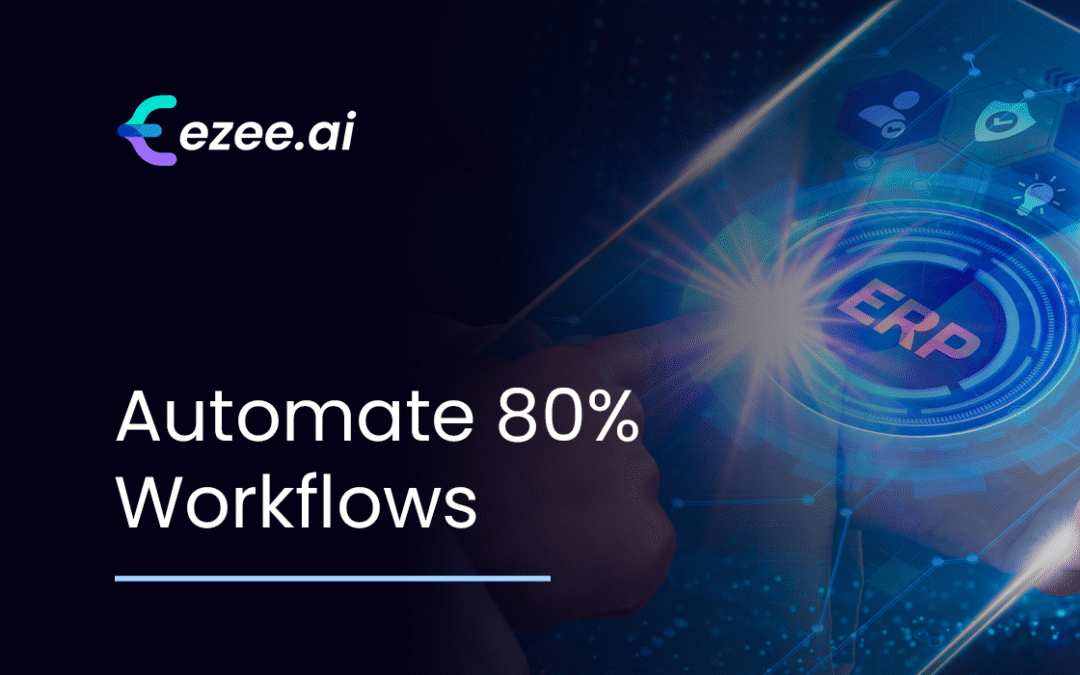

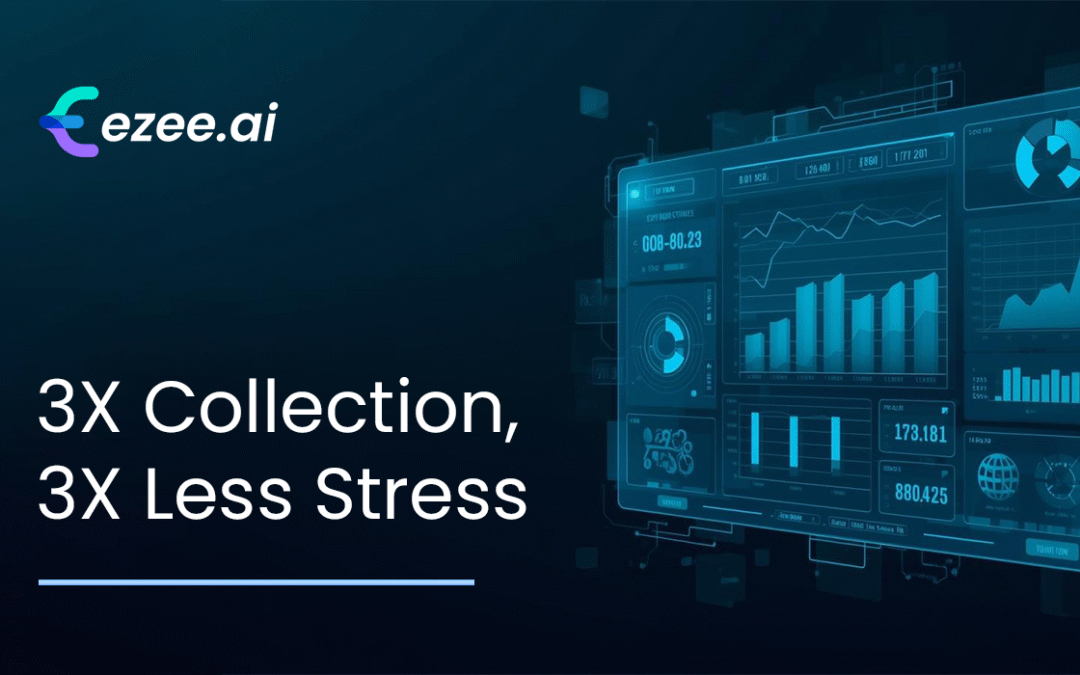
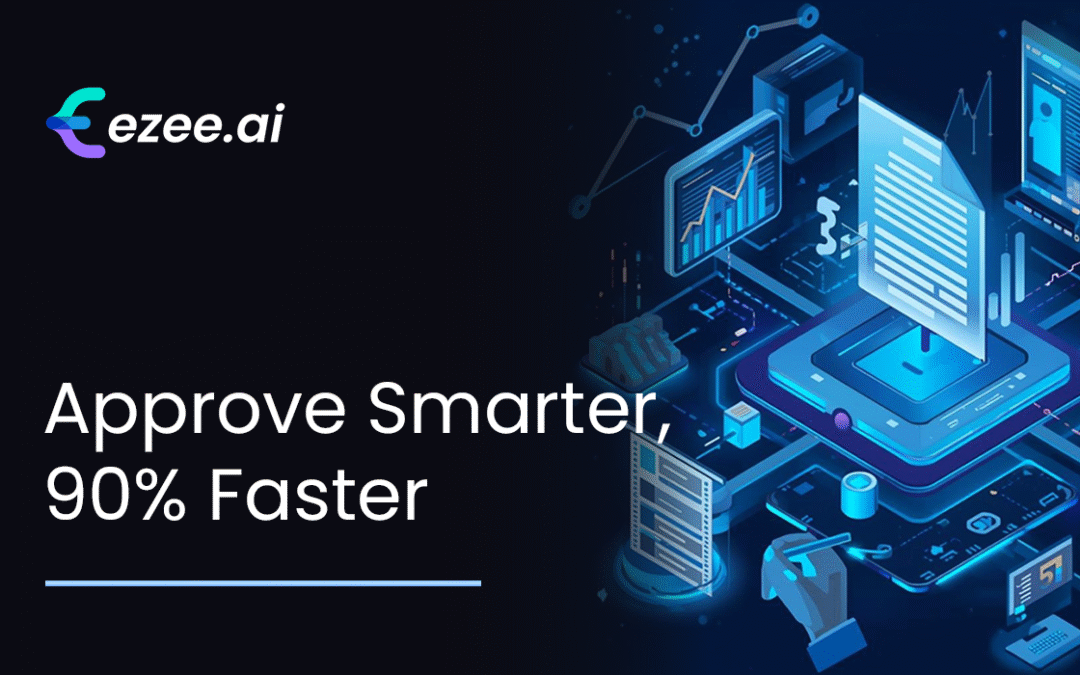



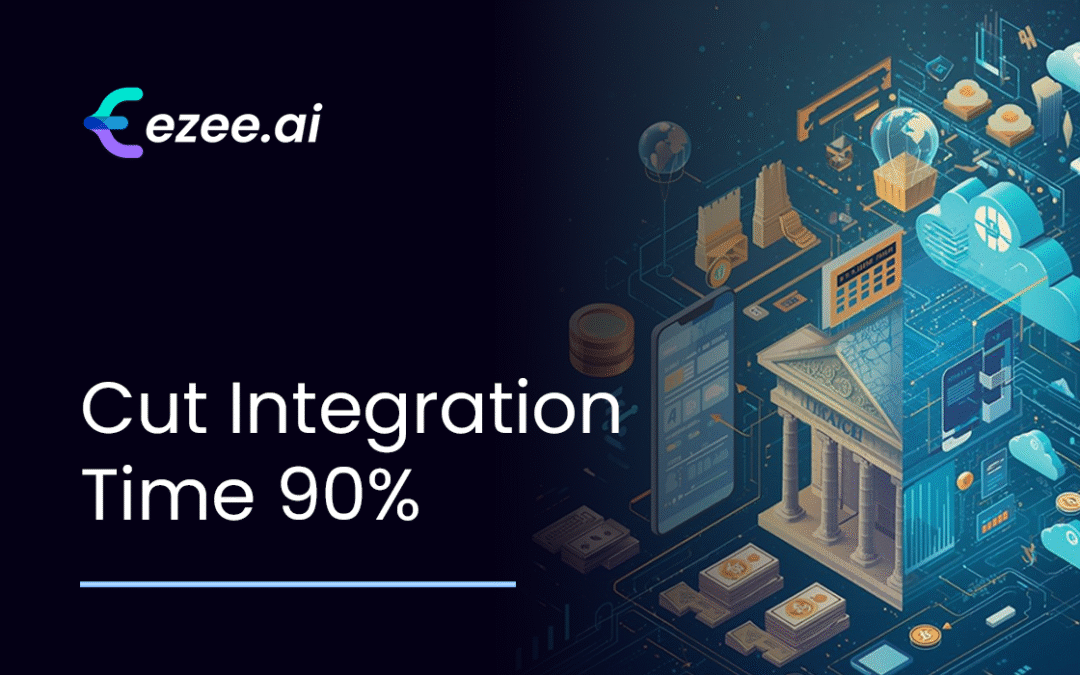
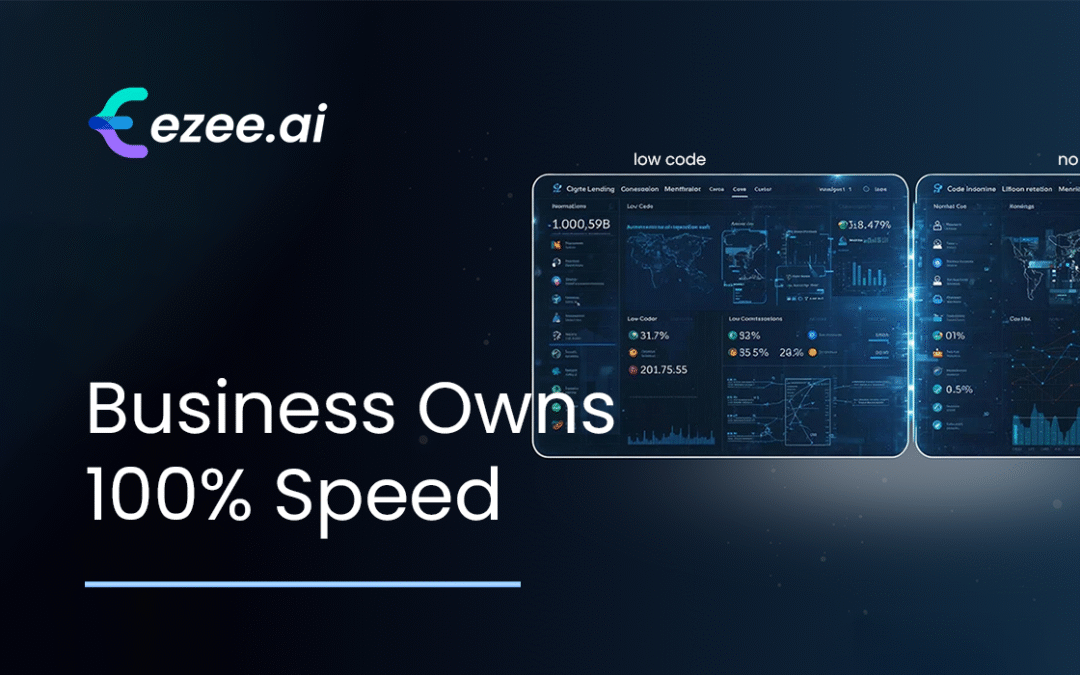
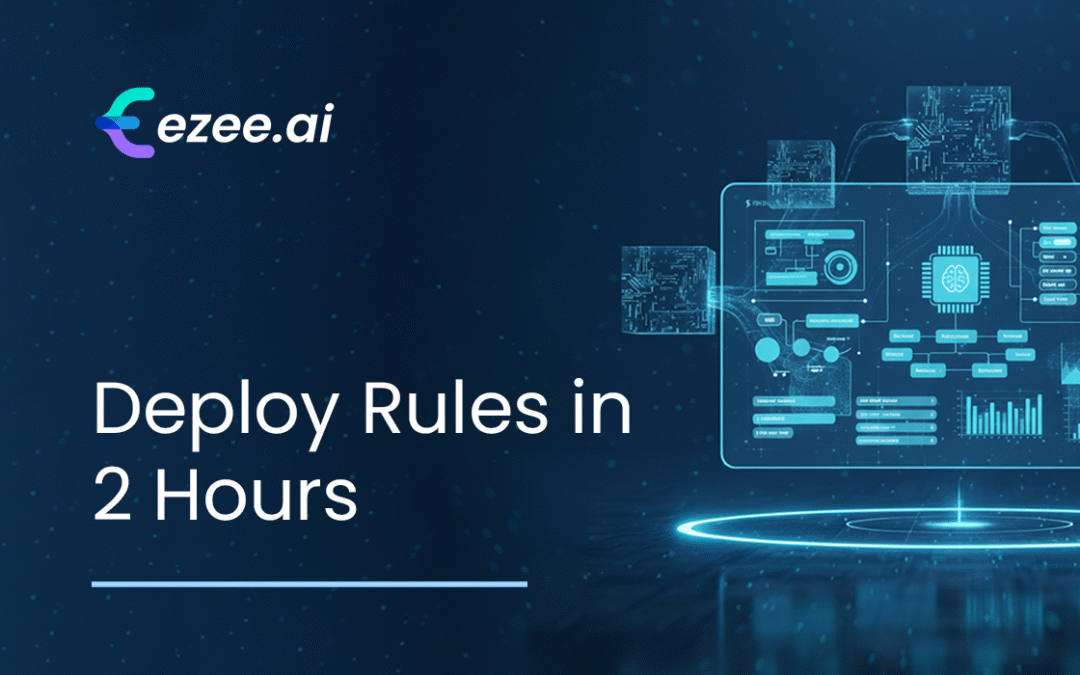
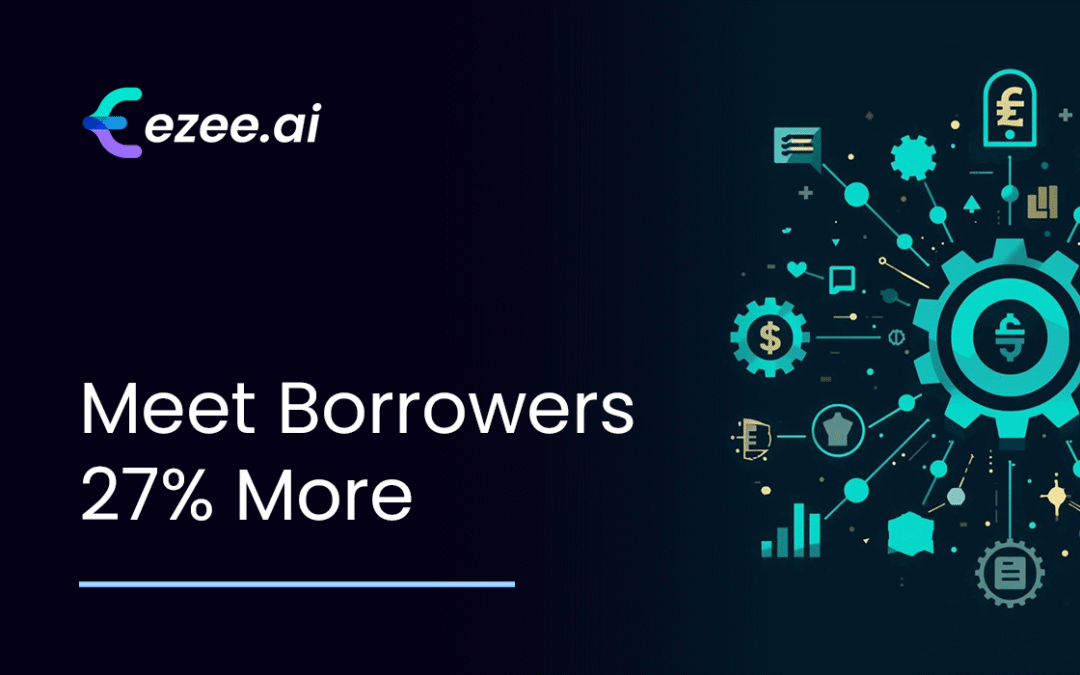
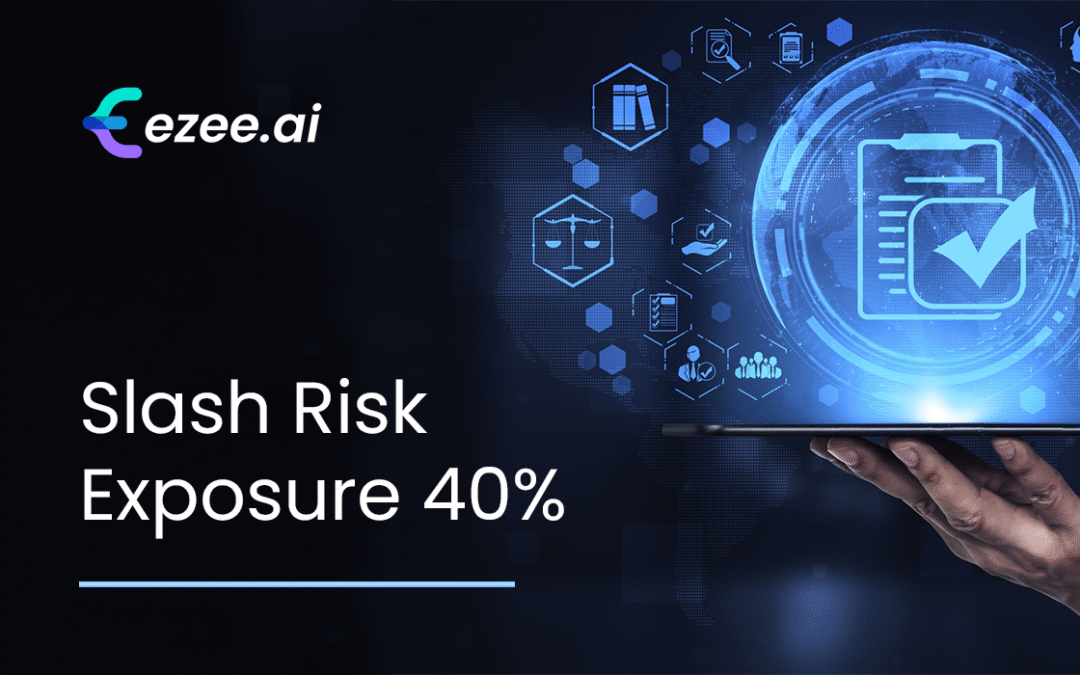
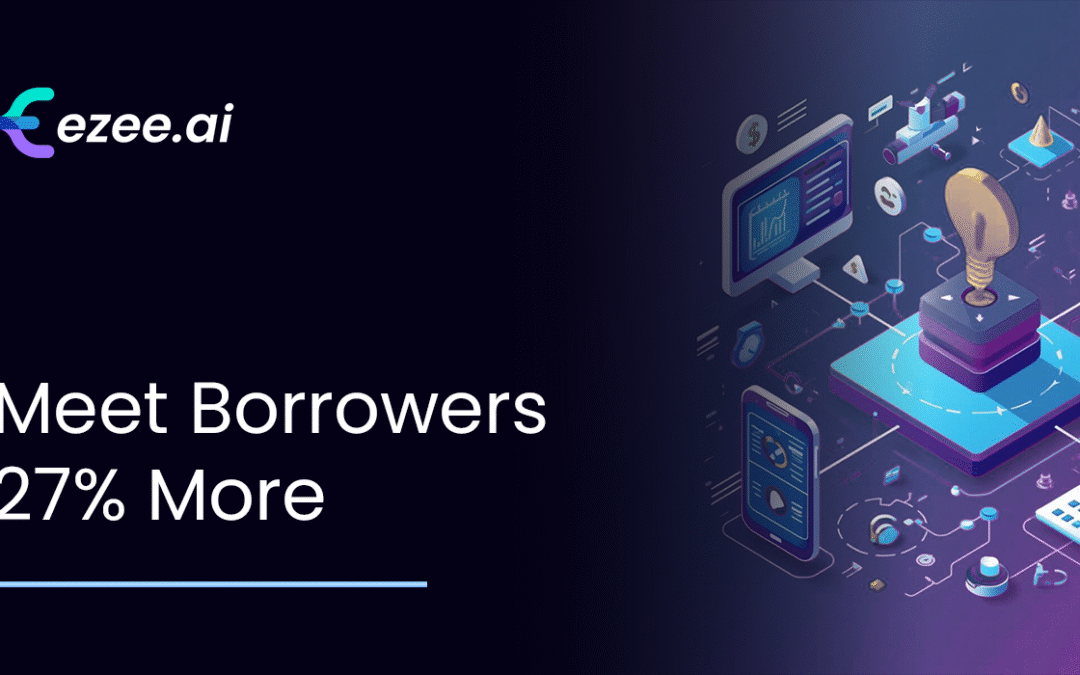
0 Comments